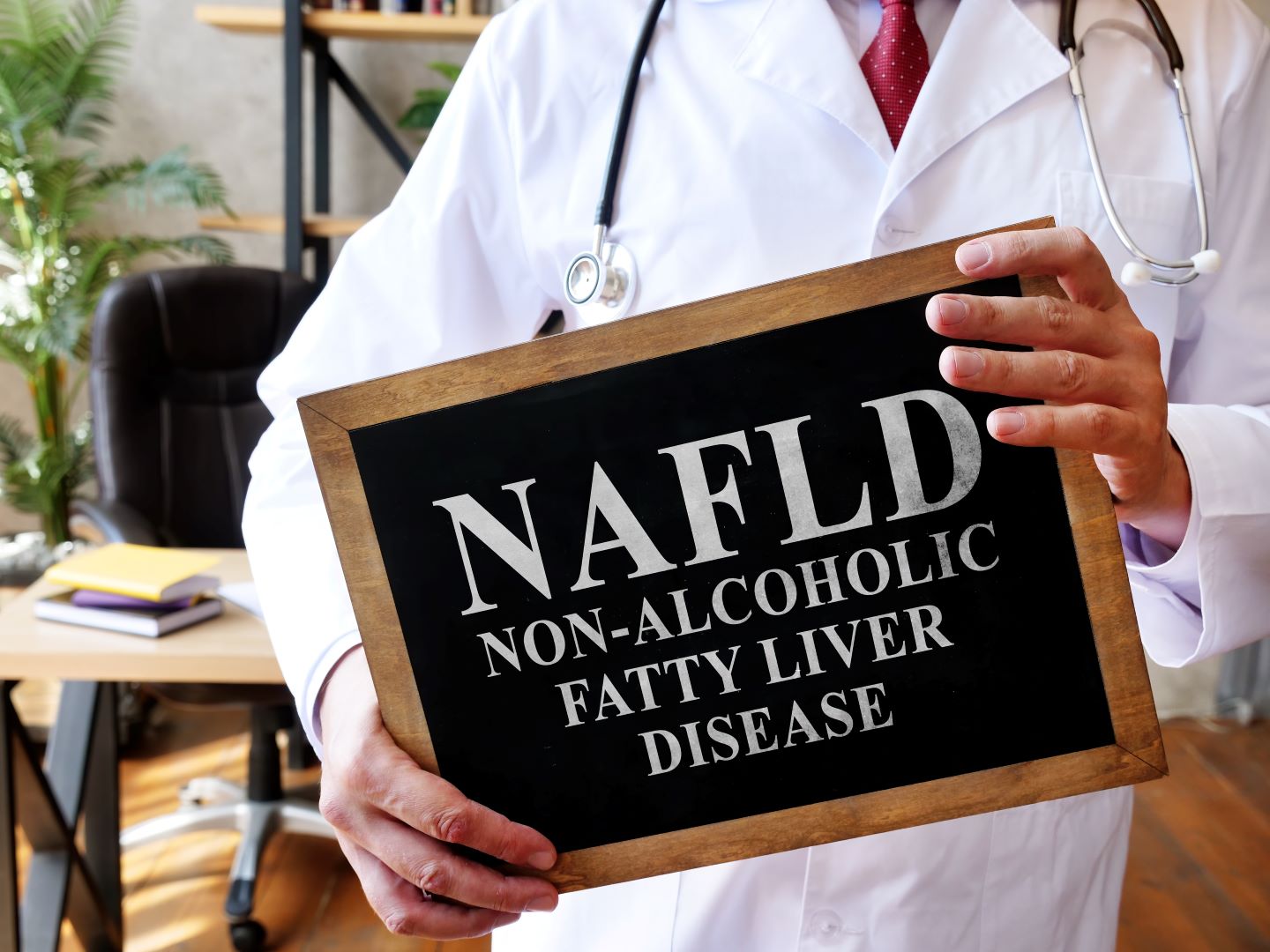Incretin mimetics, more commonly referred to as glucagon-like peptide-1 receptor agonists (GLP-1RAs), are a class of drugs primarily used for the management of type 2 diabetes mellitus (T2DM) and obesity. However, research has shown that GLP-1RAs may have the potential for the treatment of other chronic metabolic diseases, which are increasingly common and a major burden to patients and the healthcare system. One such metabolic disorder is non-alcoholic steatohepatitis (NASH), a progressive form of non-alcoholic fatty liver disease (NAFLD), characterised by liver inflammation and fibrosis.
While the exact mechanism of action of GLP-1RAs/dual agonists in NASH is not yet fully understood, ongoing research has demonstrated promise for the treatment of NASH due to potential hepatic benefits. Specifically, research suggests that GLP-1RA drugs can reduce liver fat accumulation, decrease hepatocyte injury and inflammation, and prevent the progression of fibrosis in patients with NASH. Moreover, GLP-1RA medications have been associated with improvements in metabolic parameters such as insulin resistance and dyslipidemia, which are commonly associated with NASH.
Currently, there are several GLP-1RAs in development for the treatment of NASH, including Novo Nordisk’s semaglutide, Eli Lily’s tirzepatide, Altimmune’s pemvidutide, AstraZeneca’s (AZ) cotadutide, and efinopegdutide (MK-6024) by Merck (MSD). This article will provide a brief description of some of the GLP-1RAs/dual agonists currently under development for NASH and the analyze the role of incretin mimetics in the treatment of NASH.
Although it is speculated that semaglutide and tirzepatide may be the lead GLP-1RAs in development for NASH, it remains to be seen whether the class’s therapeutic efficacy is strong enough for FDA approval. Specifically, despite strong performance as a weight loss drug, data from a Phase II trial (NCT03987451) showed that semaglutide failed to meet its primary endpoint of improving NASH-related cirrhosis compared to placebo. In the study of 71 NASH patients with compensated cirrhosis (the F4 stage of the disease), only 10.6% of those who received a weekly 2.4mg dose of semaglutide saw an improvement in liver fibrosis compared to the 29.2% of patients who received placebo. In 2021, Novo announced that the development of semaglutide in NASH would continue as monotherapy for patients with stage F2/F3 NASH (NCT04822181) and semaglutide will be further explored as a combination therapy for patients with stage F4 NASH with cirrhosis (NCT04971785) in partnership with Gilead Sciences.
While data from Lilly’s studies of tirzepatide in T2DM and obesity yielded impressive results in terms of glycemic control and body weight reduction, the tirzepatide in NASH program remains in early Stage 2 development (NCT04166773), although there is research suggesting enhanced hepatoprotection. Similarly, Altimmune’s pemvidutide, a glucagon-like peptide 1 (GLP-1) glucagon receptor (GCGR) dual agonist peptide (GLP-1R/GCGR), is still in early Phase I development. In September 2022, data from a Phase IIb trial, consisting of 94 patients with NAFLD randomised 1:1:1:1 to 1.2mg, 1.8mg, 2.4mg pemvidutide, or placebo, showed that all three patient groups dosed with pemvidutide hit the study’s primary endpoint of reducing liver fat.
Additionally, in March 2023, the safety and tolerability profile of pemvidutide was called into question when interim data from a Phase II obesity trial (MOMENTUM; NCT05295875) trial reported high levels of discontinuations in both the treatment (24%) and placebo (28.2%) cohorts. However, according to Altimmune, ~50% of the withdrawals from the treatment group were attributed to gastrointestinal (GI) adverse events (AEs) such as nausea and vomiting and many placebo discontinuations were due to withdrawal of consent. Furthermore, the company noted that the trial protocol did not allow for dose reduction due to intolerability which could have impacted both the AE and dropout rate. Therefore, it is unlikely that there will be much negative impact on the development of pemvidutide in the NASH programme.
The status of AZ’s cotadutide in the NASH programme remains unclear, as the company reportedly terminated the clinical program for its daily glucagon-like peptide-1 receptor glucagon co-agonist (GLP-1RA/GCGR), cotadutide, to develop AZD9550, a once-weekly injectable GLP-1RA/GCGR. In April 2023, the company issued an emailed statement to Endpoints News disclosing a shift of focus from the NASH market to the ever-growing diabetes and obesity market. Nonetheless, AZ’s Phase IIb/III PROXYMO-ADV trial in non-cirrhotic NASH patients with fibrosis remains on track to reach full study completion by April 2024 and was recently updated to “Active, not recruiting,” with a total of 45 participants enrolled. Although it is unknown if or when AZ will initiate its AZD9550 in the NASH programme, it can be assumed that the company will apply important data and learnings from the cotadutide to inform the development of AZD9550.
Lastly, MSD’s investigational GLP-1R/GCGR (MK-6024) in Phase II development for the treatment of NASH, in partnership with Hanmi Pharmaceutical, recently received fast track designation for NASH following topline data from a Phase IIa study (NCT04944992). According to MSD, patients treated with efinopegdutide saw a 72.7% mean reduction in liver fat content (LFC) at week 24 compared to semaglutide’s 42.3%. Additionally, MSD reported that 66.7% of patients treated with efinopegdutide achieved LFC levels below 5% vs. 17.8% for semaglutide (average LFC before treatment was 20.3%).
While the early study data appears to favour MSD at first glance, it should be noted that the trial compared 20mg of MK-6024 compared to 1.34mg of semaglutide, which is almost 50% less than the standard 2.4mg dosing. However, MSD intends to use results from the initial Phase IIa study to inform the design of its Phase IIb study, comparing efinopegdutide versus semaglutide at a higher dose, which the company plans to initiate by the end of June 2023. As such, while further studies are needed to establish the long-term efficacy and safety of GLP-1RAs in NASH, their mechanisms of action and observed benefits make them a favourable therapeutic option in NASH.





